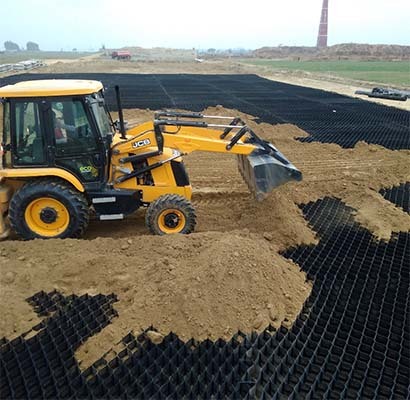Embankment
What is an embankment, its uses and types?
Embankments are usually made up of earth, stones, or concrete with the purpose of stabilizing land and controlling water flow in flood-prone areas. Their significance is demonstrated in the way they are strategically used in roads, railways, and riverbanks for safety enhancement through the prevention of erosion and improvement of transportation systems. Embankments are raised formations designed to uphold or confine materials such as soil, rock, or gravel. In civil engineering applications, embankments are designed to provide support to rail beds, roads and highways, prevent flooding in a riverbed or also reclaim land by shoring materials. These structures endure the effects of gravity, water pressure, and other external forces, ensuring they remain stable and durable over time.
Historically, trapezoidal shapes have been favored due to their stability and efficiency. Yet, in certain contexts, alternatives such as berms (elongated, narrow embankments with shelving, or alternatively defined as raised strip of land in some cases) or irregular shapes may be favored. Their main role is to provide support for infrastructure systems, direct water flows as well as provide ground stabilizations, and prevent soil from being eroded.
What are the different types of embankments?
- Earthen embankment: The cheapest way to construct embankments is by using compacted earth material which has become so popularly employed in construction works. In particular, these structures work perfectly in providing effective flood control since they can be used on both roads and levees.
- Rock-filled embankment: Rock-filled embankments can be defined as stable platforms that use large bits and pieces of stones or rocks. The rugged terrain is commonly used for heavy loadings and is widely applied to road foundations and coastline protections against washing away.
- Concrete embankment: For areas subject to heavy traffic such as factories and main highways, concrete embankments are the most durable and strongest. Resistance to extreme weathering conditions and erosion also gives them an edge over other materials when it comes to permanent structures.
- Gabion embankment: Flexible permeable embankments can be constructed by using gabions which are cages that contain rocks. Erosion control is effectively done through these structures, hence their frequent utilization at shorelines as well as mountains where the land needs reinforcement.
- Asphalt embankment: These embankments comprise a blend of asphalt together with aggregates thereby providing a strong smooth surface ideal for road development. What makes this kind of embankment special is its rapid installation coupled with the ability to integrate seamlessly into existing road networks.
- Composite embankment: Enhancement of structural properties by compositing soil, rock, and synthetics among others is what composite embankments involve. These kinds of berms are engineered according to specific project needs thus offering solutions for difficult environments e.g., soft soil areas or high water tables like traditional methods might fail.
Types of embankments based on construction purpose
- Road embankment: A road embankment can raise the level of a roadway providing a stable base above surrounding terrain. This arrangement ensures that floods do not enter into roads while also minimizing environmental wearing out of roads which improves transport route safety and lifespan.
- River embankment: These are structures made to obstruct river waters, especially during flood events, to save nearby communities and lands. They also facilitate the discontinuance of soil loss from riverbanks as well as land eradication. These measures are aimed at controlling flood discharges so that there will be less damage to human settlements or farmlands during unpredictable or seasonal floods.
- Railway embankment: The railroad embankment is an elevated structure that ensures a balanced and firm foundation for train tracks. Additionally, they enable trains to move on straight lines resulting in less maintenance work and increased safety. In addition, these mounds also reduce noise levels around railway lines and prevent illicit access.

How are embankments built?
Embankment construction includes placing or spreading materials such as clay, rock, or cement and compacting them to make them firm. This commences by clearing the vegetation and leveling the ground as part of site preparation. They will then be moved to a site where they are filled up in layers and compacted with heavy machinery to make them last long and not get eroded easily.
Strata Geosystems provides innovative products and solutions for embankments. We use geosynthetics like StrataGrid and StrataGrid biaxial (SGB) geogrids and StrataWeb® geocell to provide tailored solutions for embankment problems like slope protection, erosion control and reinforcement. Collaborate with us to get access to this cutting-edge technologies.
